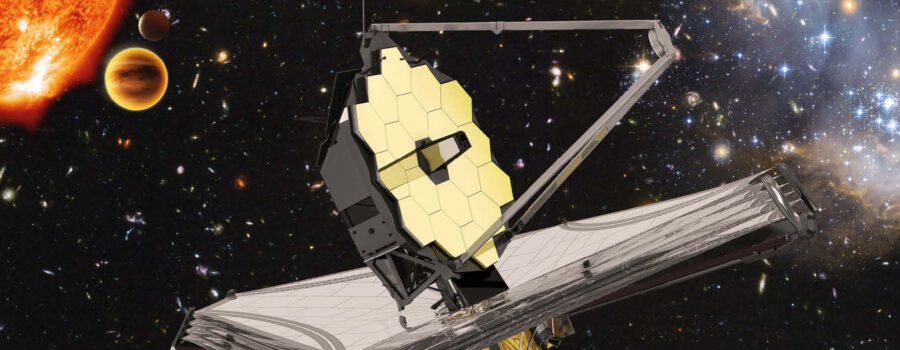The James Webb Space Telescope (JWST) is a very large, infrared space telescope that has been launched successfully in December 2021. It results from a collaboration between NASA and ESA. With its very large mirror of 6.5 m in diameter it is the successor of the Hubble Space Telescope. Working essentially in the infrared it will observe the early phases of the formation of galaxies and stars.
JWST will carry four science instruments, from which the Mid-Infrared Instrument (MIRI) is one. MIRI is the mid-infrared instrument that provides imaging, coronagraphy and integral field spectroscopy over the 5-28 micron wavelength range.
The Input-Optics and Calibration Unit (IOC) is part of the MIRI Optical Bench Assembly. The IOC is designed to pick off the MIRI field of view from the JWST Fine Steering Mirror and to relay the relevant parts of it into the spectrometer and imager sub-systems. The IOC is thus the opto-mechanical relay structure that distributes the incoming light to the different science instruments. The IOC is cooled down to 8K.
OIP, as a subcontractor to Centre Spatial de Liège, was responsible for the design and development of the IOC. The Flight Model was delivered already in 2010. The JWST-MIRI developments in Belgium were funded by the Belgian Federal Science Policy Office BELSPO through the PRODEX programme.
OIP nv was established in 1919 as ‘Optique et Instruments de Précision’ in Ghent. Today, the company is located in Oudenaarde and employs over 100 people. OIP Space Instruments is a trusted partner to design and deliver electro-optical high-end customised spaceborne solutions for international development projects.
(Picture from esa.int)



Leave a Reply
Your email is safe with us.